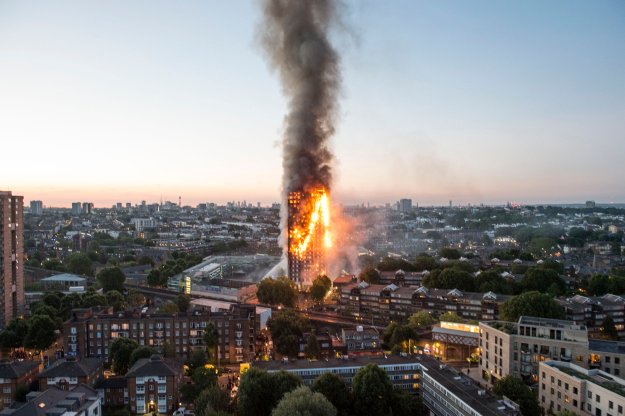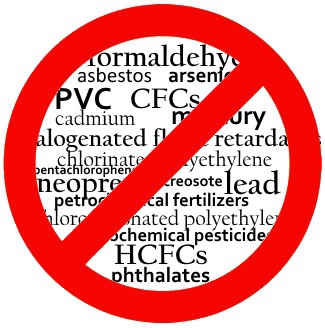Many have written, blogged and commented on the avoidable tragedy at Grenfell Tower. I have been in two minds whether to add my voice, but then as a colleague pointed out, I have been blogging on themes pertinent to the tragedy since 2007. Theses themes (on risk, collaborative working, health sustainability, standards, strategies, and construction improvement) have featured in this and other blogs, in numerous articles across many journals and of course brought together within the recently published FutuREstorative.
No doubt, in boardrooms across the world of built environment organisations, questions are being asked: have we designed, specified or installed similar materials and systems in similar situations. Do we really know? Do we know the materials, chemicals and the impacts of insulation we have installed? Where are the inspection and audit results, where are the material test certificates and evidence of compliance with specifications.
We do not know the exact cause and failures at Grenfell, but what has become clear is that this a systematic failure, a cocktail of failures and certainly not just a single cause.

Back in my biz improvement / safety advisory role in the 90’s, we used the swiss cheese model for a systematic thinking approach to risk. In the swiss cheese model each slice of cheese is seen as a system activity or aspect layer, holes in individual layer may be problematic but other layers act as a defence to prevent more significant failure.
But when too many holes line up we see a catastrophic system collapse event. As sadly we have seen at Grenfell Tower.

Grenfell Tower will undoubtedly have a profound and highly significant impact on design, construction and building management worldwide, but we do not need to wait for an inquiry when we know the problems, the holes in the myriad of swiss cheese layers, and we know what needs to be fixed.
BUILT ENVIRONMENT HOLES IN THE SWISS CHEESE
deregulation and desire to have a legislation bonfire
slow response by government to head lessons learnt
lobbyist pressure to affect change
a fashion for ignoring experts
partial privatisation of the building inspection regime
fragmented supply chain
inappropriate materials or systems
lack of system thinking
a lowest cost mentality that still persists
passive fire strategies
material testing in isolation, not as a system
lack of transparency and impact knowledge of materials we specific, approve, install
ignorance of precautionary principle thinking
lack of collaborative working
failure to question – the “we can only do what the client, architect, contractor specifies’ culture
lack of understanding of building technology (cf uncompleted fire stopping)
inspections (see the Edinburgh Schools Report)
and so many more …
Grenfell should be seen as a warning for the deregulation many would like to see following Brexit. The great repeal bill is set to repeal many of the health and environment EU regulations (those that that ‘hamper uk business’ but will prevent other Grenfells).
Amongst the many causes, it has been suggested the fire may well have started from a faulty appliance. How sadly ironic that it was the perceived EU over-regulations on safe & efficient kettles and vacuums that became a cause-celeb in last years Brexit referendum. (Who are the EU to tell us how safe our kettles and vacuum cleaners should be ….?) See George Monbiot Too often safety has been sacrificed to an agenda of deregulation backed by lobbyists
 Moving in from the green fringe of the built environment sector, we have robust standards emerging containing material schedules built on the precautionary principle. (Here we can list the Living Building Challenge, WELL standards along with the Red List, Pharos, Declare and other lists.) Organisations and clients have their own schedules, for example Google’s Portico, British Lands Material Schedule. If such standards and red lists were adopted by the public sector, embedded into building regulations, then the cladding insulation at Grenfell would in all probability not have been permitted.
Moving in from the green fringe of the built environment sector, we have robust standards emerging containing material schedules built on the precautionary principle. (Here we can list the Living Building Challenge, WELL standards along with the Red List, Pharos, Declare and other lists.) Organisations and clients have their own schedules, for example Google’s Portico, British Lands Material Schedule. If such standards and red lists were adopted by the public sector, embedded into building regulations, then the cladding insulation at Grenfell would in all probability not have been permitted.
‘The precautionary principle implies that there is a social responsibility to protect the public from exposure to harm, when scientific investigation has found a plausible risk’
The precautionary principle states that if an action or policy has a suspected risk of causing harm to the public, or to the environment, in the absence of scientific consensus (that the action or policy is not harmful), the burden of proof that it is not harmful falls on those taking that action. The principle implies that there is a social responsibility to protect the public from exposure to harm, when scientific investigation has found a plausible risk. These protections can be relaxed only if further scientific findings emerge that provide sound evidence that no harm will result. (Wiki)
Lloyd Alter blogging in Treehugger illustrates the impact of the material used in Grenfell. What is sad is that this, to most, has come as a surprise.
What appears to have happened is that the Reynobond’s polyethylene core caught fire and the stack effect in the two-inch gap made it spread almost instantly. Apparently it got hot enough that the supposedly flame-retardant polyiso charred as well, putting out tons of smoke, possibly contributing cyanide and other toxic gases. The vinyl framed windows also melted, letting the toxic fumes into the suites very quickly.
As may be expected from media such as the Daily Mail, the green, carbon reduction, climate change agenda has emerged as a blame. Alice Bell writing in the Guardian(Don’t blame green targets for Grenfell) soundly kicks this into touch
But we do have a problem with many seeing building sustainability as simply being energy & thermal performance. The key message of FutuREstorative was to address the necessary shift in sustainability thinking, away from a blinkered focus on energy to one that embraces human and planetary health within a socially just and ecologically sound sustainability. And … perhaps we should not use the word sustainability until we do.
Today, it is difficult to attend sustainability events where health and wellbeing is not a key theme and message, it is sad that this message is not percolating down through the long tail of construction where lowest cost is still prevalent. Lowest cost even at the high price of social and human life. (A mineral based insulation with a Fire Rating would have cost £2 m2 more than the polyurethane based, more flammable insulation used on Grenfell. It will be interesting to see any records of the value engineering exercise to arrive at this material choice, if indeed there was a recorded VE, and how the decision met the Social Value Act.
Update 30 June BBC Reporting evidence of VE (or cost engineering)

Time then for all in the built environment sector, the government, lobbyist, clients, designers, contractors and building operators to adopt precautionary principle thinking, particularly when human health hazards have been flagged by coroners reports, data, research and lessons learnt .
This can be voluntarily done now, today. To wait years for outcomes from an inquiry and the regulation changes that will surely follow, changes that will tell us what we already know, is simply irresponsible.

Martin – thank you for writing this. The tragedy reminds us that keeping people safe is one of our primary roles.
In no way is any project forced to choose sustainability over safety, and it concerns me that sustainability could be used as a partial scapegoat. The true cause is likely to be complex and far reaching.
LikeLike
Interesting article. We can observe the swiss cheese concept in many accidents, near misses that happen as well as tragic events / disasters like this. But IMHO this has nothing to do with the green agenda. Safety and energy efficiency are not mutually exclusive .
Some key questions that should be answered in addressing the root cause include:
Who specified the material?
Who approved it?
Who checked it was safe (or not)?
Who signed it off?
What competence do these people have to do this?
Was the material specified substituted? and if so who checked/approved that?
Was the material used compliant with regs? Are those regs clear and fit for purpose?
LikeLike
As Andrew says, the sad fact is that most tragedies are due to a series of small errors, not one catastrophic failure. Not checking a certificate or delivery note, failing to check the latest data on a product, not making the potential consequences of a decision clear to a client.
On the news yesterday a fire officer highlighted the recent trend to cut red tape, and reminded us that some people consider fire safety to be red tape.
What is the process for assessing the standards – does it wait until a public inquiry or is there an instant review?
LikeLike
In the immediate aftermath of the horrible Grenfell Tower Fire, David Lammy MP said that ‘those culpable must be held to account for their irresponsibility’.
And of course, he is absolutely right. But who are they?
They are the manufacturers, construction companies, engineers, fire experts, politicians, civil servants, certifiers and architects who decided that a combustible material can be used for the external thermal insulation, stand-alone or part of an ETICS, thus potentially fuelling & accelerating a façade fire.
It is crazy to use a material which burns easily and then to apply measures to make it less combustible. To add toxic HBCD to an already questionable material. Trying to prevent flames reaching it by encasing and/or shielding it with fire barriers made from non-combustible materials is bizarre.
Building fires fuelled by combustible external insulation have been seen around the world for many years. Germany, France, Australia, US, Dubai. All can readily be viewed on the www. In some countries building regulations have been amended to reduce the fire risk, but WHY not just ban all, not Class A rated materials. Just prohibit EPS, XPS, PUR, PIR, etc..
Cost & profit.
Building cost analyses of new build & retrofit projects in Germany have shown that using a non-combustible mineral insulation material is only 8-15% more expensive. The price of more safety & less risk.
Profit for developers & rigid urethane foam manufacturers and their lobbying power I do not know, but my guess is …
Change building regulations and keep it simple. Do not introduce better encasing, more complicated fire barriers, etc..
Fires will happen again, but the risk of spreading so incredibly fast can be reduced. Only allow truly non-combustible materials.
Lives can be saved.
LikeLike